News and Forthcoming Events
3rd October 2013: The Power of Gap Year Travel in the reign of Elizabeth I
Some eminent Elizabethans with anniversaries at this time of year
Philip Sidney, Fulke Greville and Thomas Coningsby
Late-September/to early October is the season to remember some Elizabethans I've come across in my research. They all have significant dates at this time of year. A talk on Saturday at Hampton Court, Herefordshire brought them again to mind.
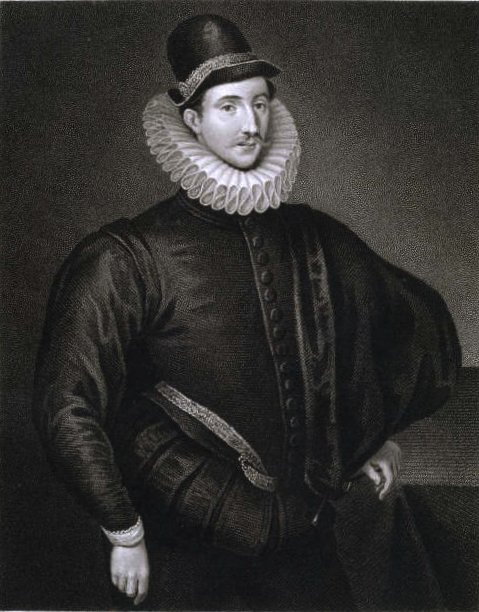
Today, 3rd October is the anniversary of the birth of Fulke Greville (1554-1628) first Baron Brooke (left) poet and playwright probably best-known for his biography or 'Life of Sir Philip Sidney' (published 1652).
Greville and Sidney were both educated at Shrewsbury School as Sidney's father, Sir Henry Sidney, was Lord President of the Council in the Marches of Wales (1560-86), and, with some (lengthy) periods of absence, expected to reside at Ludlow Castle.
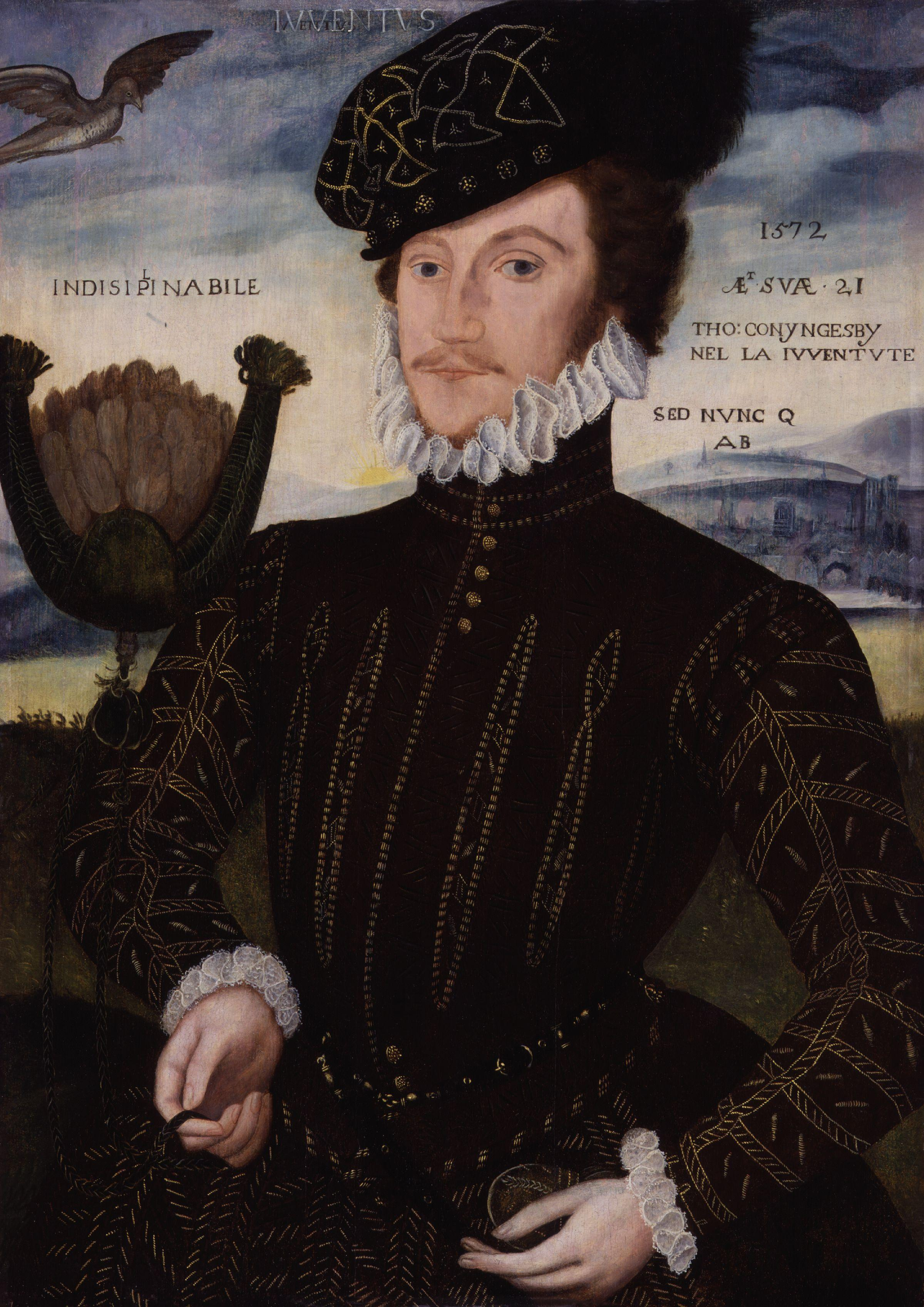
It was in this context that the young Philip Sidney became acquainted with Thomas Coningsby (1550-1625) of Hampton Court, Herefordshire (left, by George Gower, National Portrait Gallery).
Coningsby was the son of Anne Englefield, whose father Sir Thomas Englefield, a Judge in Common Pleas was the right hand man of earlier President of the Marches' Council, Bishop Rowland Lee.
Coningsby's father died when he was eight or nine years old, and his mother married secondly Sir John Huband of Ipsley, Warwickshire (today Worcestershire) another member of the Council of the Marches (besides being Steward to Robert Dudley, Earl of Leicester and Constable of Kenilworth Castle).
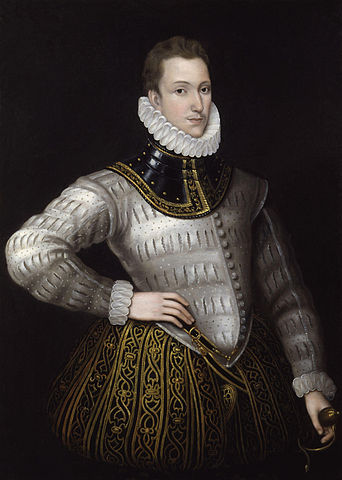 Thus it was that on 25th May 1572 when Elizabeth I granted licence to Philip Sidney (left, artist unknown, National Portrait Gallery) to travel beyond the seas, Coningsby was one of his companions. In Paris the travellers met King Charles IX and a fortnight later, were witnesses to the St Bartholemew's Day massacre, when Protestants were murdered in the city. Coningsby's mother's family, the Englefields, was notable for its Catholic recusancy; this event must have gone some way to eradicating any residual tendencies towards the old faith that Coningsby harboured.
Thus it was that on 25th May 1572 when Elizabeth I granted licence to Philip Sidney (left, artist unknown, National Portrait Gallery) to travel beyond the seas, Coningsby was one of his companions. In Paris the travellers met King Charles IX and a fortnight later, were witnesses to the St Bartholemew's Day massacre, when Protestants were murdered in the city. Coningsby's mother's family, the Englefields, was notable for its Catholic recusancy; this event must have gone some way to eradicating any residual tendencies towards the old faith that Coningsby harboured.On via Lorraine, Strasbourg, Heidelberg and Frankfurt to Vienna for horsemanship and then, by 1574 to Venice (where Veronese made Sidney's portrait) and Padua for astronomy, science, music and art. At one point on the road, the young men were tricked by an innkeeper into paying twice for their lodging. Before the deception was known, Sidney wrongly accused Coningsby of having stolen money from his purse - an embarrassing misapprehension.
Evidently there was no long-term damage as Coningsby was to marry Sidney's cousin Philippa Fitzwilliam of Milton, Northamptonshire.
Today Sidney is perhaps best remembered for his work 'Arcadia'. This was planned in 1580 when, after an altercation at Court, Sidney withdrew to Wilton, home of his sister, Mary Herbert, Countess of Pembroke. 'Arcadia' recalls the courtly virtues of courage, religion, generosity, courtesy and fidelity. Sidney famously demonstrated many of these qualities himself when, lying injured at Zutphen, Water was brought to him and he instructed that it be given instead to a comrade lying near him.
Coningsby was unquestionably much influenced by Sidney. He is said to have run his home, Hampton Court, as an academy of the courtly arts. Evidence of the influence of their travels through Italy survives in a drawing of a classical fountain head in the courtyard of Coningsby's home. Furthermore Coningsby was once much offended by being called in the street 'an italianate knave'.
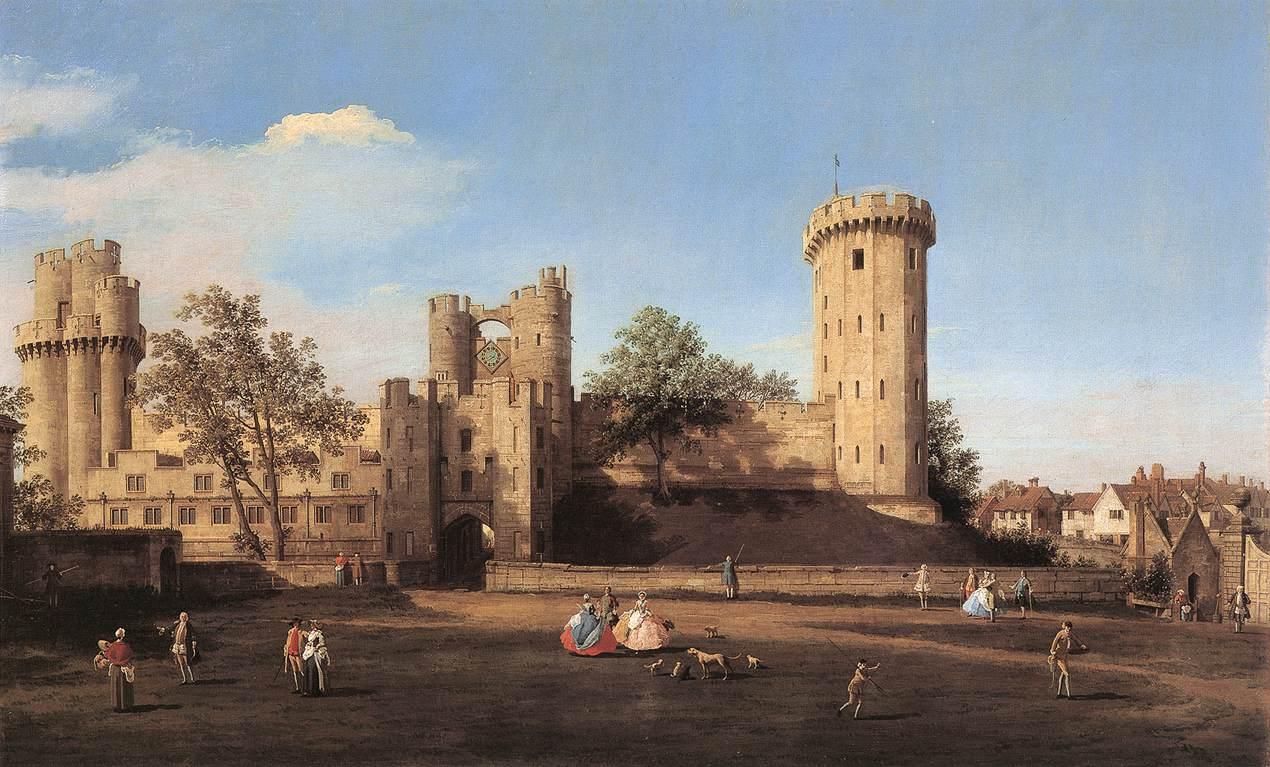
Greville never married and remained a favourite at Court besides manifesting administrative abilities which won him positions under Elizabeth I and James VI and I. The latter granted Greville Warwick Castle (left, by Canaletto, 1752, Birmingham Museum and Art Gallery) which Greville rescued from dilapidation with an outlay of £20,000. He was raised to the peerage in 1621 as Baron Brooke.
Seven years later, he was stabbed by a disgruntled servant. His wounds being treated with lard and becoming infected, Greville died an agonising four weeks later, on 30th September, days before his 74th birthday.
Thomas Coningsby was knighted by the Earl of Essex (a presumption by Essex much to the Queen's displeasure) outside the walls of Rouen on 8th October 1591, almost five years to the day after the death of Sidney. Of his campaign in France Coningsby left a remarkable account in which, perhaps not surprisingly, he describes some of his adventures in the style of the medieval courtly romance. His wanderings also betray something of the contemporary Spanish picaresque literary style.
Ben Jonson's character Puntarvolo in 'Every Man out of his Humour' (1599) is said to be based on Coningsby. Certainly Puntarvolo has more than a little of Don Quixote - six years before Cervantes' masterpiece began to be published:
'he can sit a great horse; hee will taint a staffe well at tilt; when he is mounted, he lookes like the signe of the George, that's all I know; save, that in stead of a dragon, he will brandish against a tree, and break his sword as confidently upon the knottie barke, as the other did upon the skales of the beast.'
 For all his outmoded eccentricities, Coningsby, like Sidney, did not forget his fellow old soldiers. In 1593 as the MP for Herefordshire, Coningsby had spoken about the need for a subsidy for disabled soldiers. Four years later, Parliament passed a statute permitting those seized of an estate in fee simple to 'establish one or more hospitals' for the 'sustenance and relief of ye maimed poor or impotent people.' In 1614 Coningsby founded in Hereford 'Coningesbies Company of old servitors' (left, The Coningsby Hospital) providing lodgings for a chaplain plus eleven 'poor old... souldieres, mariners or serving men'.
For all his outmoded eccentricities, Coningsby, like Sidney, did not forget his fellow old soldiers. In 1593 as the MP for Herefordshire, Coningsby had spoken about the need for a subsidy for disabled soldiers. Four years later, Parliament passed a statute permitting those seized of an estate in fee simple to 'establish one or more hospitals' for the 'sustenance and relief of ye maimed poor or impotent people.' In 1614 Coningsby founded in Hereford 'Coningesbies Company of old servitors' (left, The Coningsby Hospital) providing lodgings for a chaplain plus eleven 'poor old... souldieres, mariners or serving men'.Coningsby specified their allowances and their apparel, including, to be worn 'as he goeth abroad a Cloke of Red Cloth Lined with Bayes of Red and reaching to ye knee'.
The red cloaks of Coningsby's old soldiers are said to have come to the mind of Nell Gwynn, a native of Hereford, when Charles II established the Royal Hospital, Chelsea in London in 1682. The Chelsea Pensioners' red coats (below) may well owe something to the Quixotic Thomas Coningsby and his inspiration, Philip Sidney.
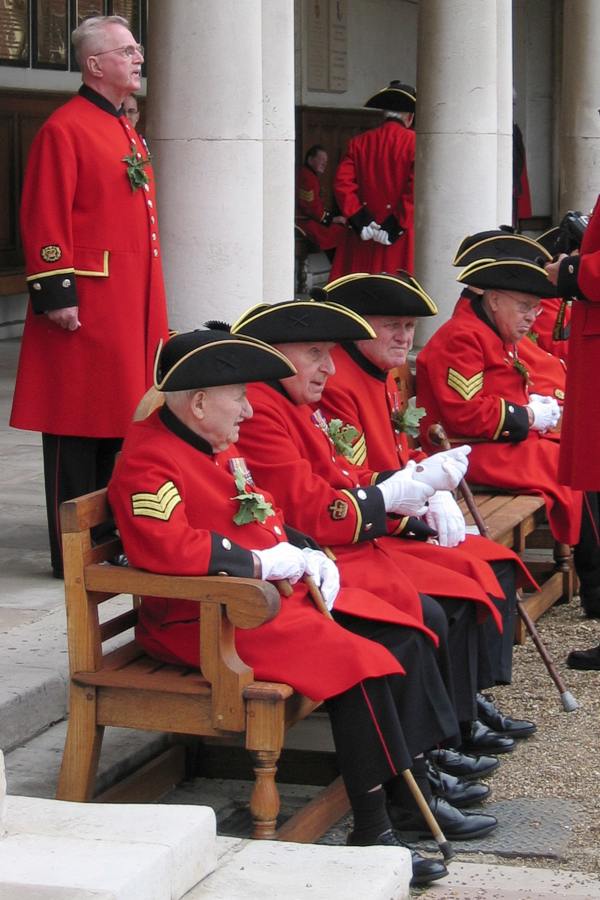 Sources:
Sources:T Coningsby A journall of cheife thinges happened in our jorney from Deape, the 13. of August, untyll [blank] British Library MS Harl 288 f253-279
Coningsby Hospital BL MSS Ro King's 47
HR Fox Bourne A Memoir of Sir Philip Sidney (London, 1862)
A H Gilbert 'The Italian Names in Every Man out of his Humour' Studies in Philology XLVI, 1947 pp195-208
F Greville Life of Philip Sidney (1907 edition)
P Hasler History of Parliament, The Commons 1558-1603 Vol I A-C
B Jonson Every Man out of his Humour (Clarendon Press, Oxford) 1927 Ed CH Herford & P Simpson
R Poole Sir Thomas Coningsby Bodleian MS 1902
P Williams The Council in the Marches of Wales under Elizabeth I (1958)
T Zouch Memoirs of the life and writings of Sir Philip Sidney (second edition, 1809)

